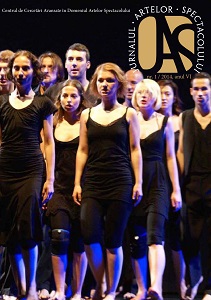Metoda Suzuki și principiile ei fundamentale
The Suzuki Method and its fundamental principles
Author(s): Ioan ArdeleanSubject(s): Theatre, Dance, Performing Arts, 13th to 14th Centuries, Sociology of Art
Published by: Editura Universitatii LUCIAN BLAGA din Sibiu
Keywords: grammar of feet; inner monologue; concentration; Hara center; mie – stillness;
Summary/Abstract: Tadashi Suzuki is one of the most celebrated auteur directors of the 20th century, among other prolific and recognized visionaries of this era, such as Peter Brook, Jerzy Grotowski and Eugenio Barba. During his career Suzuki combined ancient Greek theatre with traditional Japanese theatre (noh, kabuki and butoh) to create what is known today as the Suzuki Method. He designed and developed a series of movements and exercises which range from falling down, standing up, to stamping, walking and isolated stillness. His work is heavily influenced by the 14th century actor/playwrite Motokiyo Zeami, whose technique juxtaposes violent and gentile body movements. These movements are centred in the pelvic area, from where Suzuki believes energy is controlled. Tadashi Suzuki believes that “A performance begins when the actor’s feet touches the ground...”. His method makes the connection between the upper and the lower body, which creates a more balance performance.
Journal: Jurnalul Artelor Spectacolului (JAS)
- Issue Year: 2014
- Issue No: 1
- Page Range: 49-51
- Page Count: 3
- Language: Romanian

